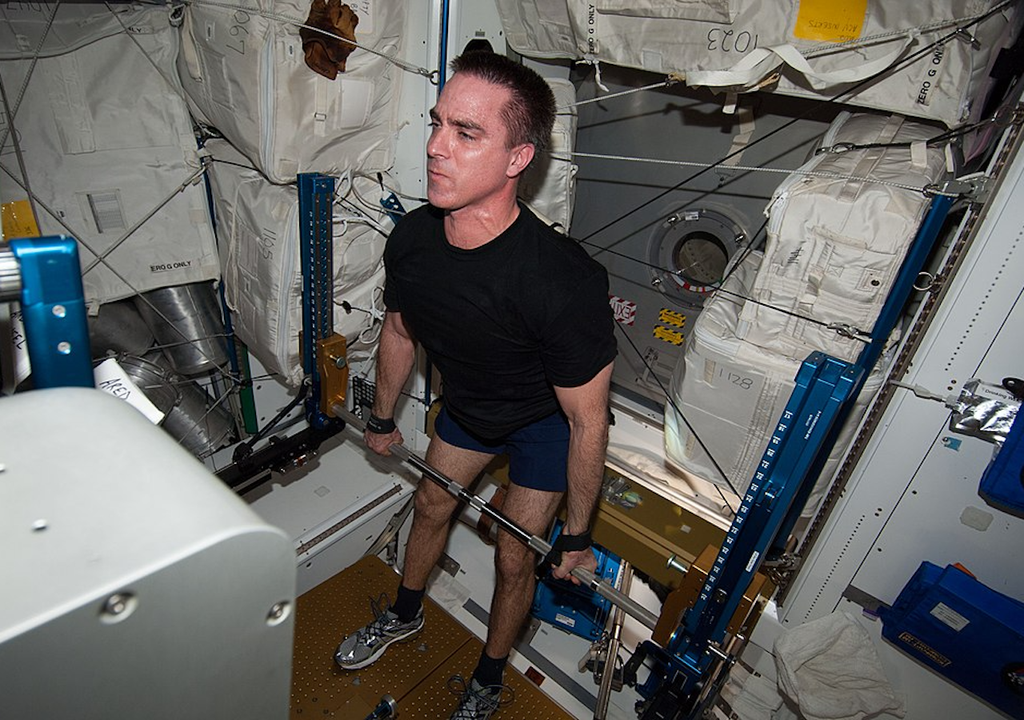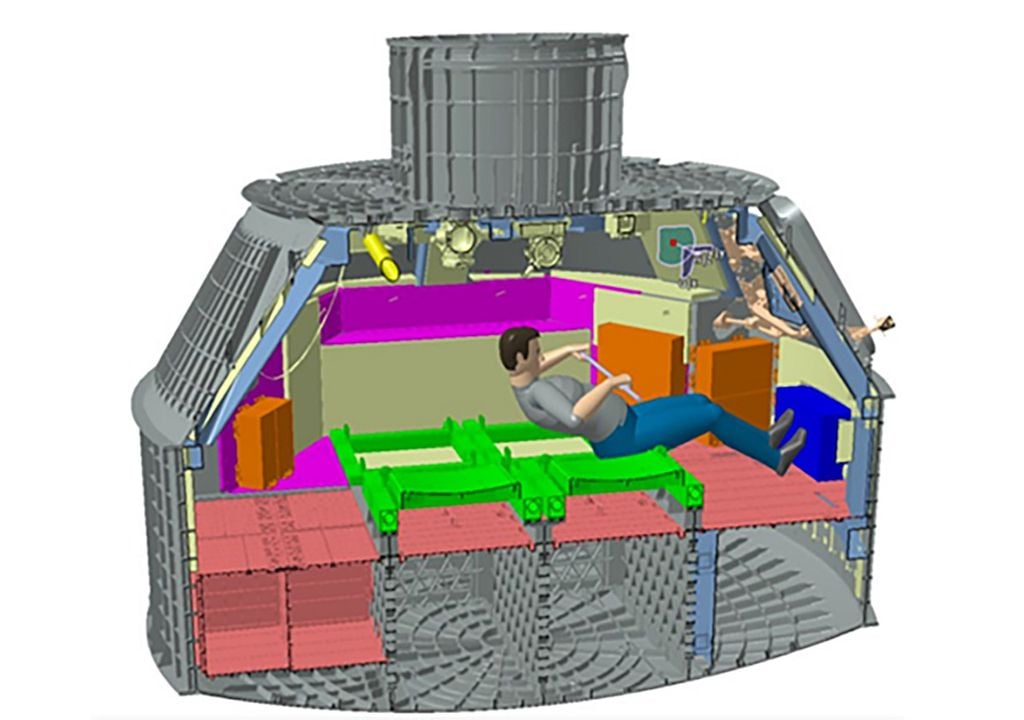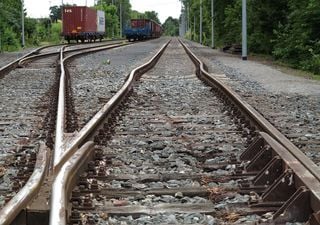Weightlifting in weightlessness: Why astronauts are doing deadlifts in space
Doing deadlifts, squats or using the bench press is not just for the gym. It’s an essential part of astronauts’ programmes to prepare for, live in, and recover from space.

As NASA explains, changing from an environment with gravity like on Earth to one of microgravity, like in spacecraft, causes changes to an astronaut’s body. Medical issues can arise physiologically and with the cardiovascular system. Changes may even occur at the microbiome level, recent research has shown.
This is why NASA studies the effects of microgravity on the human body in the International Space Station (ISS). This information is important for plans for more complex and longer missions in space.
How microgravity affects the body
The negative effects of microgravity on the body have long been known. In 1992 Wolfe and Rummel reported the effects include:
- Negative calcium balance which results in bone loss.
- Atrophy of antigravity muscles.
- Changes in fluids of the body (such as plasma volumes).
- Cardiovascular deconditioning.
This is why there have been many experiments to mitigate these effects. For example, the Canadian Government is helping Artemis astronauts stay in shape through a flywheel for use in microgravity. It was used on the National Research Council’s Falcon 20 airplane during parabolic flight. Parabolic flights are a cheaper way of testing technologies and doing experiments in microgravity for the space environment.

Flywheels were invented in the 1990s to reduce muscle and bone loss caused by microgravity but can also be used on Earth from preparation and rehabilitation. NASA designed a flywheel for the Orion spacecraft which had to meet specifications like optimal vibrations and acoustics.
CSA astronaut Jeremy Hansen tested the flywheel out by performing deadlift high pulls on the flywheel. It was tested out with the contributions of the Canadian Armed Forces. After familiarising and doing similar protocols that they would in space, the next step was to try it out in a microgravity setting, to better mimic what the astronauts would be doing, during parabolic flight.

The Artemis II crew will then test the flywheel in the real space environment during the first crewed test flight of the Artemis program. During which, they can find out what is the most effective exercise sequence, and whether results are the same in microgravity.
The advantage of the flywheel is it is compact, smaller than a suitcase. On the ISS astronauts can access other machines like exercise bars, foot restraints, squat harnesses and heart rate monitors. This equipment enables aerobic exercise and to perform deadlifts, including high pulls bent over rows for increased resistance, and also harness squats.
Doing deadlifts in microgravity
Doing deadlifts in space can feel very different in microgravity. The exercise platform itself may be free moving, and there is less proprioception experienced, which is the way the muscles responds to outside forces like different weights.
These exercises are done with expert support and supervision during programmes. The European Space Agency (ESA) previously took on physiotherapists and sports scientists to help astronauts prepare. They monitored the astronauts’ exercise performance while on the ISS and helped recondition them once they returned to Earth.

French astronaut Thomas Pesquet shared his experience with the European Space Agency (ESA): “The Advanced Resistive Exercise Device or ARED is called this for a reason, it uses pressurised air in two cylinders and complicated machinery to allow us to weightlift in space: squats, deadlifts, bench press, shoulder press, biceps curl, etc, we can do it all… but we do a lot of squats: these muscles don’t do much work during our normal day."
"We never skip exercise on the International Space Station. Every. Single. Day. I miss having a shower, and I miss the rain, and I miss fresh food, but secretly I also miss having a day without having to exercise. Don't tell my flight surgeon!”
Even so, deadlifts are a great option for astronauts in the space environment. What’s more, this exercise programme does not require power (only if there is digital data collection involved). As technology advances, we can expect more support systems to be developed, such as muscle stimulators and special space suits (that should be designed more comfortably than those of the past).
Source of the news:
How Canada helps Artemis astronauts stay in shape. Published 22 July 2024. Government of Canada official website. Available at: https://www.asc-csa.gc.ca/eng/news/articles/2024/2024-07-22-how-canada-helps-artemis-astronauts-stay-in-shape.asp








